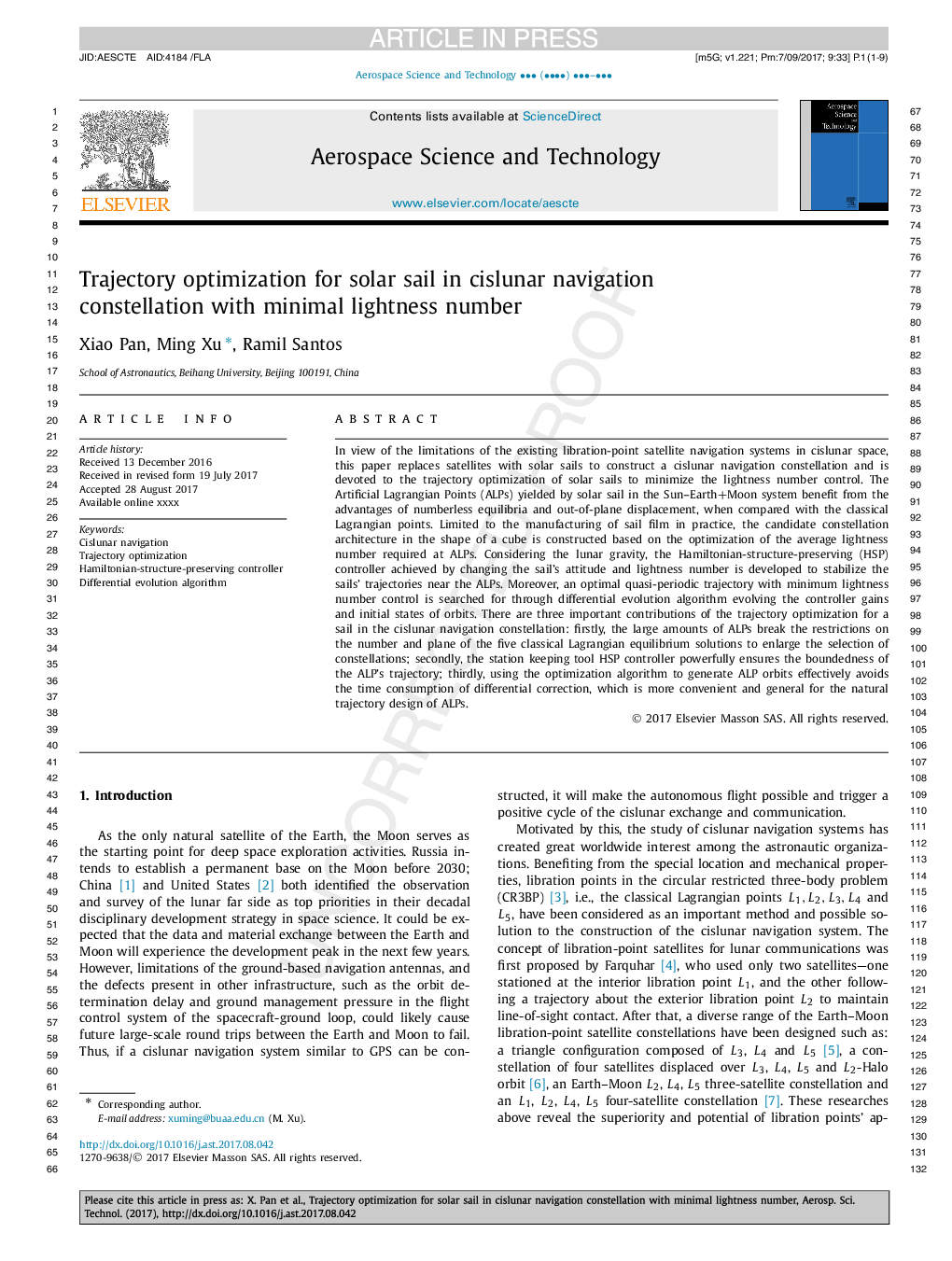| Article ID | Journal | Published Year | Pages | File Type |
|---|---|---|---|---|
| 5472635 | Aerospace Science and Technology | 2017 | 9 Pages |
Abstract
In view of the limitations of the existing libration-point satellite navigation systems in cislunar space, this paper replaces satellites with solar sails to construct a cislunar navigation constellation and is devoted to the trajectory optimization of solar sails to minimize the lightness number control. The Artificial Lagrangian Points (ALPs) yielded by solar sail in the Sun-Earth+Moon system benefit from the advantages of numberless equilibria and out-of-plane displacement, when compared with the classical Lagrangian points. Limited to the manufacturing of sail film in practice, the candidate constellation architecture in the shape of a cube is constructed based on the optimization of the average lightness number required at ALPs. Considering the lunar gravity, the Hamiltonian-structure-preserving (HSP) controller achieved by changing the sail's attitude and lightness number is developed to stabilize the sails' trajectories near the ALPs. Moreover, an optimal quasi-periodic trajectory with minimum lightness number control is searched for through differential evolution algorithm evolving the controller gains and initial states of orbits. There are three important contributions of the trajectory optimization for a sail in the cislunar navigation constellation: firstly, the large amounts of ALPs break the restrictions on the number and plane of the five classical Lagrangian equilibrium solutions to enlarge the selection of constellations; secondly, the station keeping tool HSP controller powerfully ensures the boundedness of the ALP's trajectory; thirdly, using the optimization algorithm to generate ALP orbits effectively avoids the time consumption of differential correction, which is more convenient and general for the natural trajectory design of ALPs.
Related Topics
Physical Sciences and Engineering
Engineering
Aerospace Engineering
Authors
Xiao Pan, Ming Xu, Ramil Santos,
